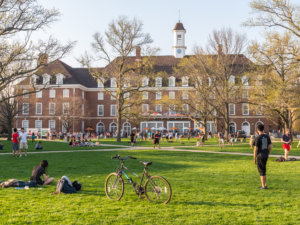demonstrated high abilities?
The postsecondary education sector is beset by a number of severe headwinds. Cost issues now elicit comparisons with the health care sector cost problem. Access deficits continue to rise and retention and graduation rates are unacceptable. Questions about the quality of education are increasing as well. Moreover, the rise of online competency-based undergraduate programs, both for profit and non profit, constitutes a disruptive force threatening the business model of the traditional bricks and motor postsecondary education sector.
However, it is important to remember that higher education was formed to achieve two principal objectives, 1), to provide education for students, encouraging them to achieve to their highest intellectual potential and 2) be encourage faculty, to teach and produce scholarship and research to their highest level of abilitiy. A principal role, introduced by Thomas Jefferson, is for higher education to be the major source of social mobility for all citizens. This ideal was institutionalized as the Morrill Land Grant ACt of 1862. It is this principle that I focus on here.
Today the college students attend largely determines their economic and social life chances. The question is whether the level of prestige granted to a select group of institutions unduly restricts the ability of all students to benefit equally from the educational attainments they demonstrate. Do all graduating college seniors secure jobs commensurate with their skills? If the answer is no can we identify innovations that assist in leveling the playing field for all citizens?

